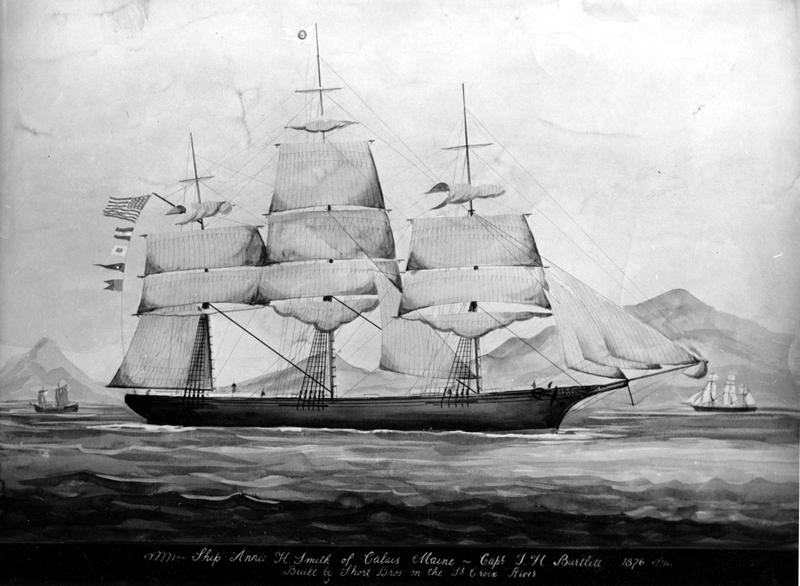
The Annie Smith was one of the largest and most beautiful ships built in the St. Croix Valley during the age of sail. It is shown in the painting above in the harbor at Hong Kong in the 1880s. The Annie Smith was just one of hundreds of fine schooners, brigs, barques and ships built on the shores of the St. Croix River and along Passamaquoddy Bay in the 1800s. Downeast schooners especially had a worldwide reputation and were known as some of the fastest ships on the oceans.
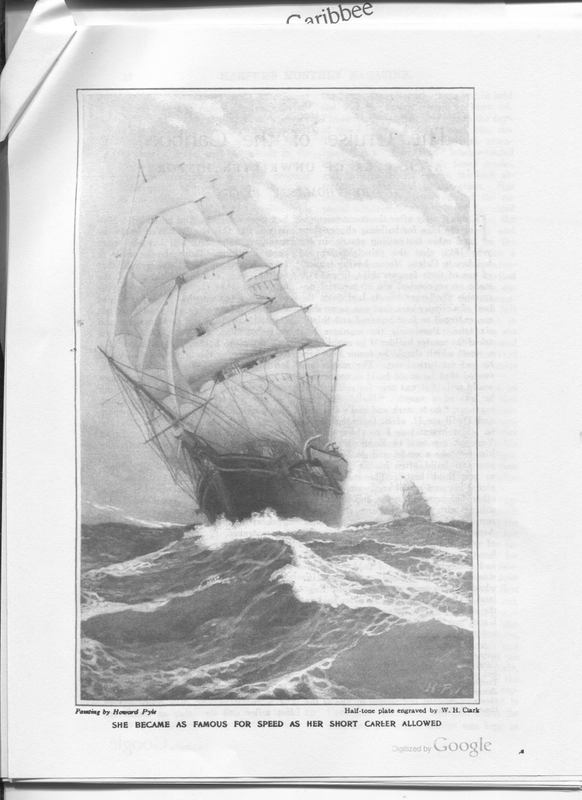
The Caribbee, built in Calais, was at one time said to be the fastest sailing ship in the world, and was bought by a slaver hoping to be able to outrun the British, then enforcing the prohibition against slave trading. Its destruction, of which we have previously written, became an international incident especially as it displayed the remarkable cruelty of slave traders who in the case of the Caribbee threw overboard or burned alive hundreds of slaves to prevent their seizure by the Brits. Unfortunately the slavers had managed to get many slaves ashore before the British arrived, and made a tidy profit on their venture even after accounting for the loss of the Caribbee.
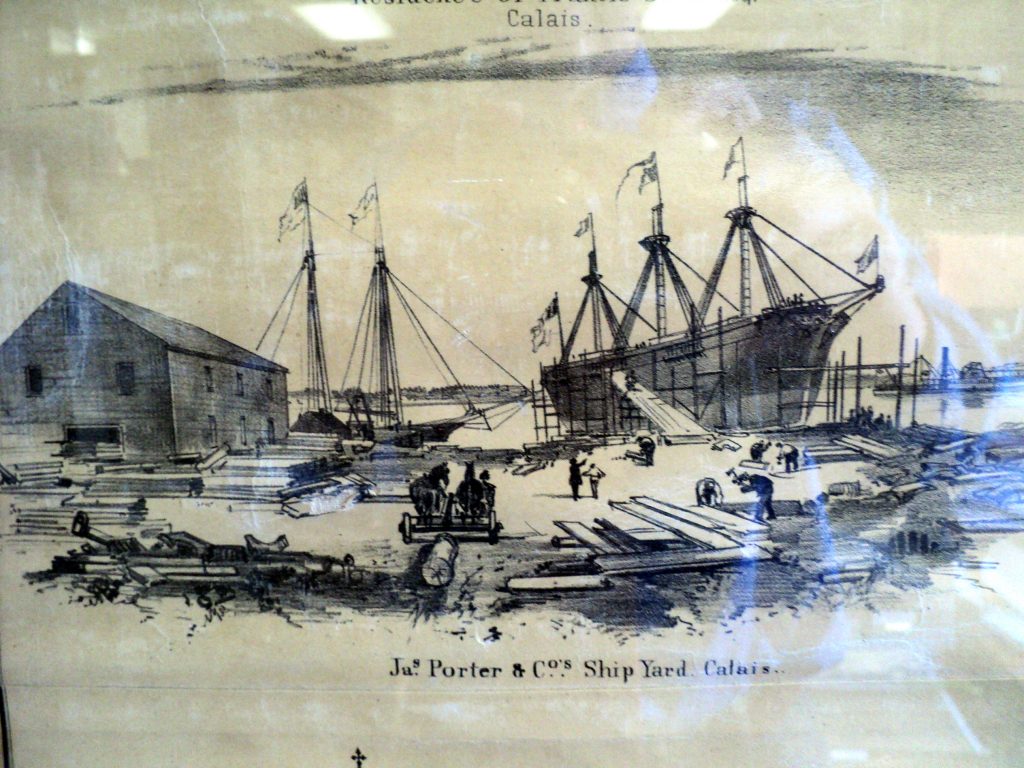
Shipyards like Porter’s yard in Calais, where the Break O’Day, the largest ship ever built on the river, was launched in 1853, lined both sides of the river. Calais had no less than four by mid century, Robbinston three, including Cox, Balkam and Brewer, and Eastport was home to the famous Samuel Wheeler and Son’s yard.
The problem with the shipbuilding industry was that while fame was generally lavished on the shipbuilders of the St. Croix, fortune was a fleeting dream. Not that there weren’t times when the builders were flush with the proceeds of their skill and labors, but in the end, almost all the great shipbuilders of the St. Croix Valley died penniless or worse. A good example is John Nehemiah Marks Brewer of Robbinston, who in his career built nearly 100 vessels in the Brewer shipyard located at what is now the Robbinston boat launch and picnic area.
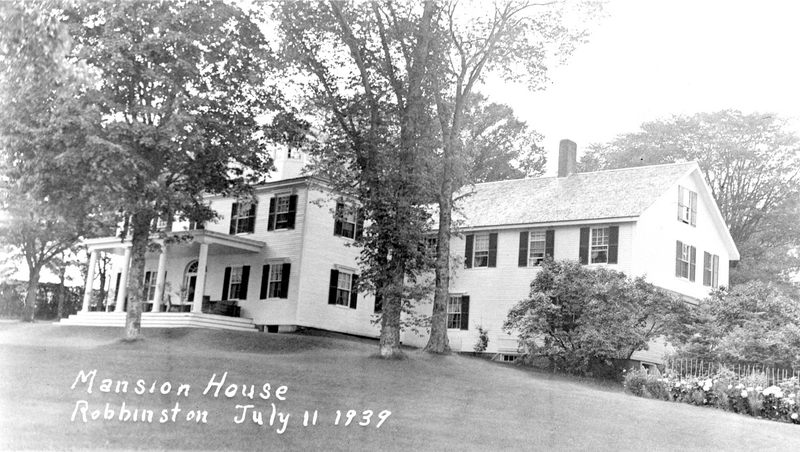
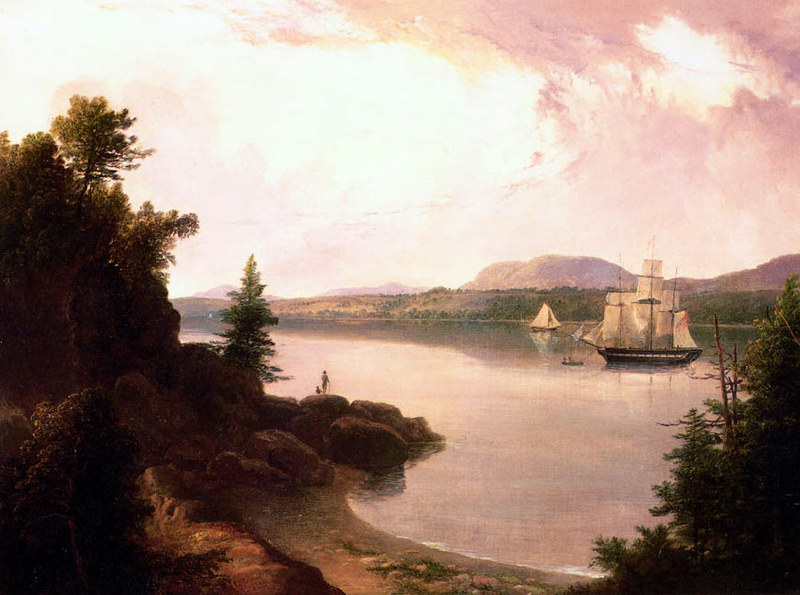
John’s father was General John Brewer, who had married into St. Stephen’s Nehemiah Marks family and built the Mansion House in Robbinston, probably about 1815. John Nehemiah Marks Brewer grew up in the Mansion House and later built the lovely Brewer House just across the street.
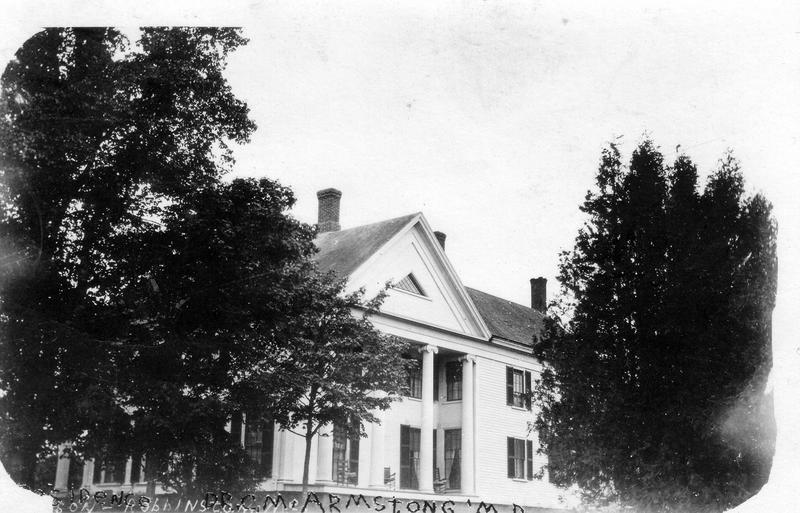
After John’s death, his wife Henrietta built the house we know as the Redclyffe. Remarkably, all three of these houses still grace Robbinston village today.
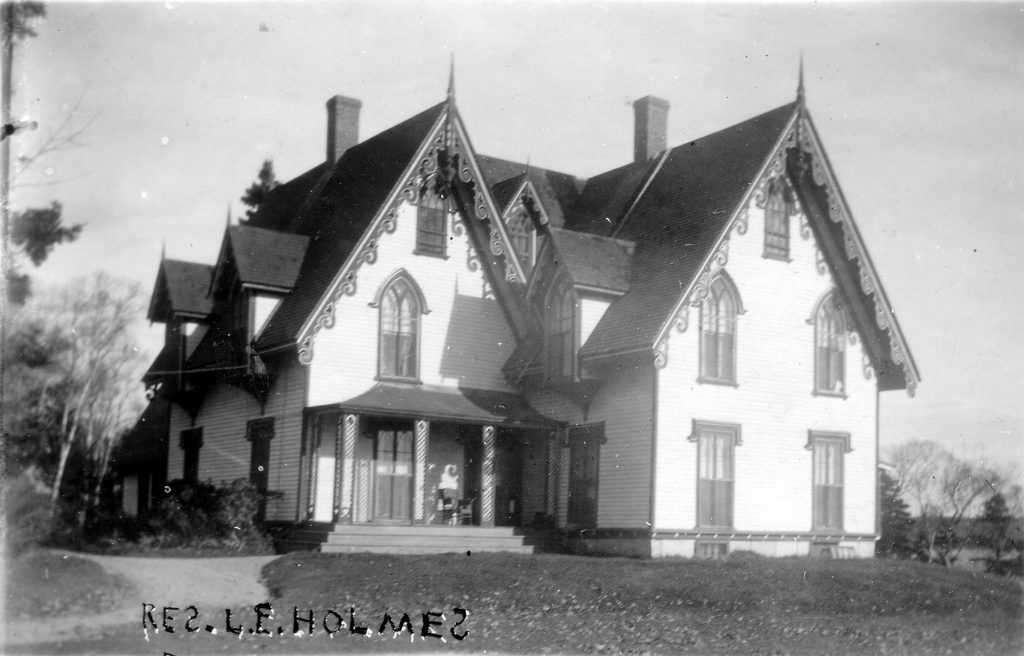
These homes are the three most beautiful homes in Robbinston, and seem to reflect the wealth, position and fortune of the shipbuilding Brewer family, and wealth, one could argue, was their due given their skill and industry. Of course at times the Brewers were flush. In 1852 John N.M Brewer built the ship Moses Taylor and sold it to a concern in New Orleans for the equivalent of a million dollars in today’s money. However, like other shipbuilders John N. M. Brewer was hard against it financially nearly all his life and at his death left his wife nearly destitute.
James Shepard Pike, who bought the Mansion House from the Brewer family after the Civil War, explained in his diaries why money seemed to slip through the fingers of Downeast shipbuilders faster than the bows of their beautiful ships cut through the ocean’s waves. The date of the entry below is 1870:
JOHN NEHEMIAH MARKS BREWER OF ROBBINSTON
Mr. Brewer was the son of General Brewer, of Robbinston, who built and kept the first hotel erected in that town. The General was a florid gentlemanly person of great amenity of manners and a sudden fiery temper. John, his oldest born, was a waggish and rattle brained young man, brought up without profession or occupation. Having, after his father’s death, nothing else to do, he set building a vessel. The venture was in some part successful and opened a career which he followed till his death in 1858- 59. He possessed great activity and energy and pursued his occupation with a rollicking, jovial, half shrewd, and half loose sort of way, with great industry.
He built vessels of every description,, large and small, Brigs, Barques, and Ships, many of them of the largest class, during a period of 30 years. Till at his death, it was said he had reached the number of a full hundred. The net result of this enterprise and industry running through an entire lifetime of remarkable activity and energy is a two story wooden house in Robbinston, where his widow now lives. There may be a little other property, but this is about all there is left to show as the results of his life. It is a striking example to show how little is often left from (what)seems a flourishing business. It was generally supposed and perhaps truly that, Mr. Brewer’s profits on every ship he launched, was not less than the value of his two story wooden house that he left behind him. He should, according to his calculations have left a whole town, instead of a single dwelling. But if he made money by his occupation, the vocation of ship owners left him exposed to losses. And of these, he had what seemed about a usual share. Sometimes he was fortunate, sometimes otherwise. A single voyage would leave him clear profits at least the value of his wooden house. But than, another voyage would sweep them all away again.
And it was thus his fortunes, like the fortunes of all mercantile men and especially ship owners, ebbed and flowed during the whole course of his 1ife. And his experience exhibited in a marked degree, the uncertain and hazardous character of the ship building business which is so large and important an interest in the State of Maine. It is worthy of investigation whether this large and increasing branch of industry in our State, is really so unproductive in the long run as it would appear to be from Mr. Brewer’s experience. The experience which, a rough generalization of that of most other ship-builder and shipowners in the Eastern part of the state and in the ports of the British Provinces which border upon Passamaquoddy Bay end its tributaries, would seem to be not at all singular. So far as I can recall, the ship-building and ship-owning men of our vicinity for the past five and thirty years, I find them nearly or quite all losses in this branch of business, and that the numerous small fortunes which have been acquired during that period by the population, have been exclusively earned in other ways.
In Eastport, Samuel Wheeler, and afterwards, Samuel Wheeler & Sons, were the most extensive merchants embarked in navigation. Mr. Wheeler, the elder, was a most careful and thrifty man in trade and gradually grew rich, dealing a little, but sparingly, in vessel property. As his sons grew up, the more fascinating business of building and running vessels, which has something in its nature, closely akin to gambling, attracted them and under every advantage of a good fortune, and excellent credit, and the long experience and sound judgment of a careful parent, the firm pursued the business for some of 15 or 20 years. The young men too were very capable and well trained business men. Yet the upshot of all was that the latter half of the senior Mr. Wheeler’s life saw the gradual wasting away of all the savings of the first half through losses in navigation, and he died bankrupt at the age of 70.
There are other firms in Eastport whose history of their ventures in this department of trade could show them to have been equally unfortunate. They were all successful for a time, but the long run seems to have been equally disastrous for all. A large number of firms there have gone down in this way during the last 35 years. If there are any who have escaped the general lot, I do not know them. It is possible there are very few firms now in business who have had a more favorable experience. But in Robbinston where a whole crop of ship-building followed Mr. Brewer’s example and for a time filled the village with shipyards, the experience was disastrous. Everybody who embarked in the business went to ruin on the gallop, till the town was left as raked of all business as at the time of its original settlement. But this result was no fair test of the profitable nature of the business for the rapid multiplication of ship building and ship-owning has gone withthe rest.
St. Stephen has exhibited some conspicuous examples of failures in this branch. William Porter was extensively engaged in it, and built and owned many ships and among them he had one which won the reputation of a lucky ship. If he had never owned another, he would have died a rich man. As it was, he died poor, his other vessels having prostrated him utterly. He was in business from 1825 to 1848 to 1850. He was a man of energy and intelligence and formed by nature for a successful businessman. His brothers, John and George also had a very wide experience inship-building, always having a number of vessels afloat. The concerns of this firm were always well managed but their vessels ruined them, though their career was lengthened by the profits of the large lumbering operations. This firm was in business from 1825 to 1852 and built and owned during that time many vessels. William, their brother, was the builder and owner of many more. Another man who embarked in the business is St. Stephen was Harry Eastman, a man of very unusual intelligence and ability as a merchant. He began ship-building in l835 and was ever after the owner of several ships. He made money, and at one time was deemed rich, but he died bankrupt in 1855 and his ships having ruined him. The experiences of the Frinks, the Todd ‘s, the McAllister’s, the Mark’s. Some of them very largely engaged in navigation, were not materially different from those I have specially enumerated. If they did not lead to ruin, it was because the business was by them held subsidiary to other businesses which proved sufficiently profitable to resist the effects of their maritime losses.
Indeed all the men who are now rich on the St. Croix river, are those who have become so in general trade, or in lumbering operations, or in buying timberlands. The latter has formed the chief source of wealth to the rich merchants on both sides of the river. In Calais not many large ventures have been tried in ship-building, but a good many small ones. I have known many losses to arise from them, but I have known but few gains. I have not the facts for a sound conclusion, but I have a strong conviction that more money has been lost then made by that branch of business in this town. These are observations I have deemed worthy of making for their practical bearing though they have but an incidental connection with the 1ife of John N. Brewer. Mr. Brewer lived and died a hospitable, generous man, tolerant in his opinions, amiable and gay to the last. His wife and brother were religious persons and John always gave support to everything intended to be good. He would encourage psalm singing in his own house when his wife would entertain the ministers, and go among them in his shirt sleeve when driven by business and tell them to, “go ahead and enjoy themselves.” In his last sickness, his brother suggested that he might suppress a little of the profanity in which he was apt to indulge, considering the solemnity of the occasion. But the suggestion received no favor and he replied, “Tom, you go to ____.”
On the whole, we may say, Mr. Brewer led a busy life with few results. He had no children.
Pike was Calais’s most famous son, Lincoln’s envoy to the Hague during the Civil War, a noted essayist and newspaper columnist. He grew up in Calais and spent much of his time when he retired in Robbinston after living many years in Washington, New York and Philadelphia. After the Civil War he bought the Mansion House in Robbinston which had been built by Gen John Brewer, John NM Brewer’s father.
In the end, we suppose if one cannot acquire both fame and fortune one should perhaps settle for fame which is more historically enduring than riches. The Downeast shipbuilders of the 1800s are still renowned among shipbuilders while the lumber barons who made fortunes clearcutting the forests have been largely forgotten.
